Three billion years ago, Earth was a very different place.
-
A Popular Tool to Trace Earth’s Oxygen History Can Give False Positives
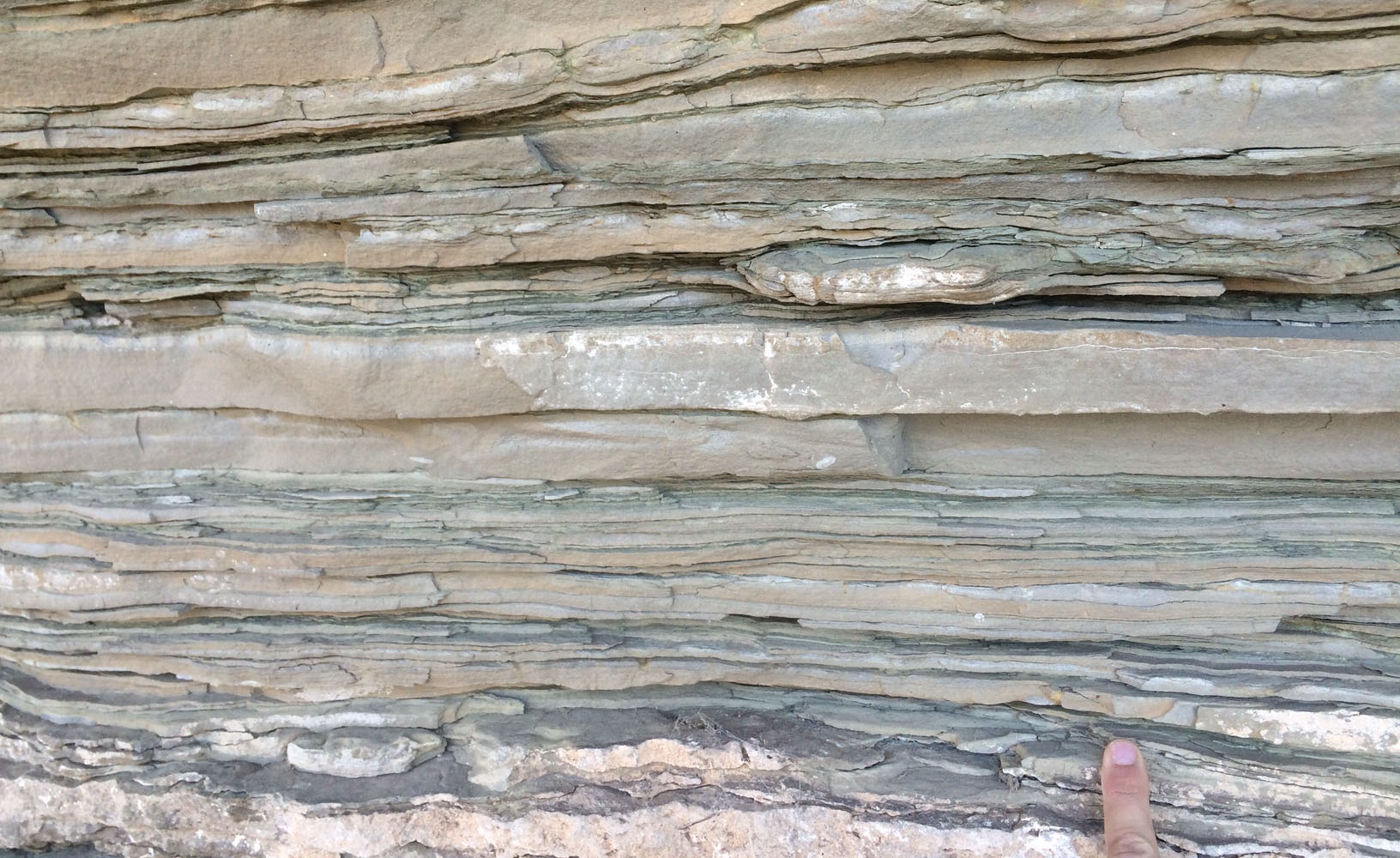
Close-up view of layered sedimentary rocks representative of those used in this study. Each layer records a snapshot of the Earth system over millions to billions of years. Credit: Georgia Tech / Yale - Reinhard / PlanavskyFor researchers pursuing the primordial history of oxygen in Earth’s atmosphere, a new study might sour some “Eureka!” moments. A contemporary tool used to trace oxygen by examining ancient rock strata can produce false positives, according to the study, and the wayward results can mask as exhilarating discoveries.
Common molecules called ligands can bias the results of a popular chemical tracer called the chromium (Cr) isotope system, which is used to test sedimentary rock layers for clues about atmospheric oxygen levels during the epoch when the rock formed. Researchers at the Georgia Institute of Technology have demonstrated in the lab that many ligands could have created a signal very similar to that of molecular oxygen.
“There are some geographical locations and ancient situations where measurable signals could have been generated that had nothing to do with how much oxygen was around,” said Chris Reinhard, one of the study’s lead authors. Though the new research may impact how some recent findings are assessed, that doesn’t mean the tool isn’t useful overall.
Yuanzhi Tang and Reinhard, both assistant professors of biogeochemistry in Georgia Tech’s School of Earth and Atmospheric Sciences, published their team’s results in a study on November 17, 2017, in the journal Nature Communications.
Source: [Georgia Tech]
December 12, 2017 • Written by: Georgia Tech • Report issue
-
Hydrothermal Vent Experiments Bring Enceladus to Earth
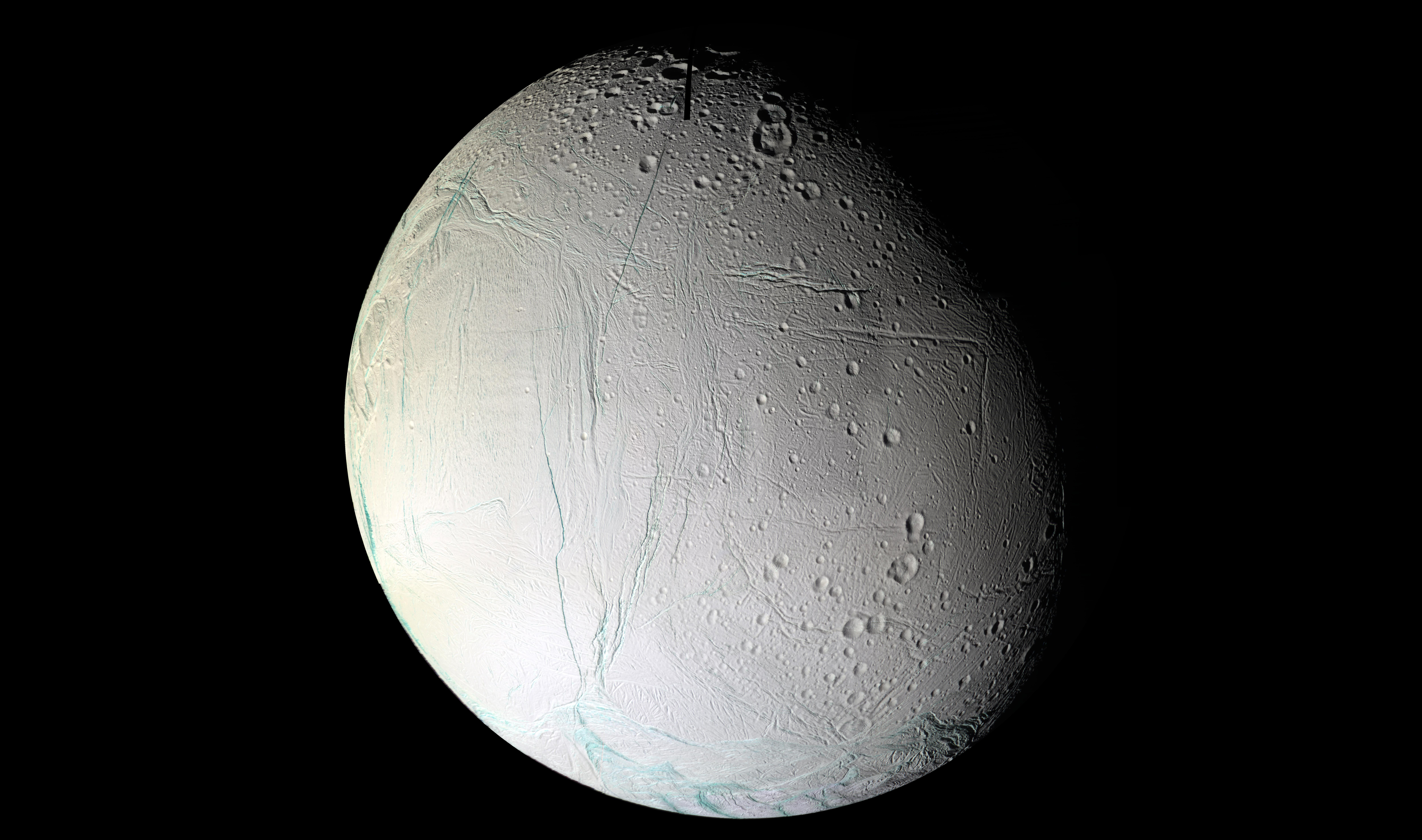
Saturn’s moon Enceladus has an ocean beneath the ice, and at the interface between the ocean and the rocky core, hydrothermal vents could be breeding grounds for prebiotic chemistry. Credit: NASA/JPL/Space Science Institute.Laboratory experiments on Earth can now simulate the conditions under which life might emerge on Saturn’s moon Enceladus, as well as other icy alien worlds, according to new research published in the September 2017 issue of the journal Astrobiology.
Since there is life virtually wherever there is water on Earth, researchers looking for alien life often focus on planets in the habitable zones of stars, which are the regions around stars where it is warm enough for worlds to possess water on their surfaces. However, in the past few decades, scientists have increasingly found evidence for oceans – and, potentially, life – hidden under the icy crusts of places such as Jupiter’s moons Europa, Ganymede and Callisto, and Saturn’s moons Enceladus and Titan.
Source: [Astrobio.net]
December 08, 2017 • Written by: Charles Q. Choi • Report issue
-
AbGradCon 2018 - Applications Open
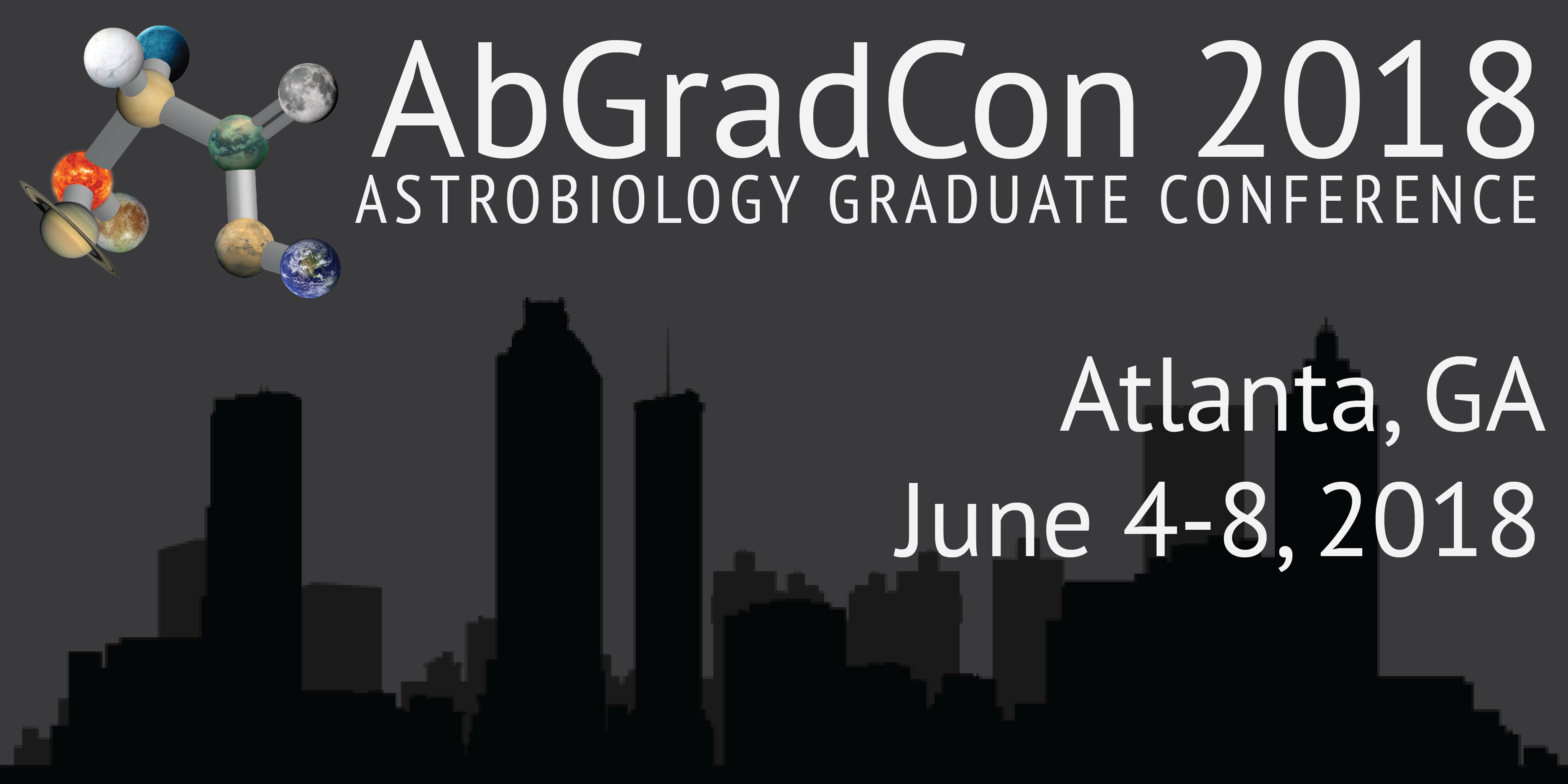
AbGradCon 2018 takes place June 4-8, 2018, preceded by a Proposal Writing Retreat on June 1-4. Source: AbGradCon.The application period for the Astrobiology Graduate Conference (AbGradCon) 2018 is now open! Abstract submission closes Monday, February 5, 2018.
AbGradCon 2018 will be held at the Georgia Institute of Technology in Atlanta from Monday, June 4th to Friday, June 8th, with a Proposal Writing Retreat (PWR) taking place from June 1st to June 4th. Applicants for AbGradCon will be able to apply for PWR at the same time as they submit their AbGradCon application. AbGradCon has funds to support a limited number of participants, with the ability to accommodate more individuals if participants are able to provide some or ...
Source: [AbGradCon]
December 01, 2017 • Posted by: Miki Huynh • Report issue
-
Early Career Collaboration Award Recipients Announced

We are pleased to announce the selections for the October 2017 Early Career Collaboration Award (ECCA).
Source: [NASA Astrobiology Early Career Collaboration Award]
November 27, 2017 • Posted by: Miki Huynh • Report issue
-
Thresholds of Catastrophe in the Earth System

Image source: NASADaniel Rothman, professor of geophysics in the MIT Department of Earth, Atmospheric and Planetary Sciences, co-director of MIT’s Lorenz Center, and member of the NASA Astrobiology Institute team based at MIT has analyzed significant changes in the carbon cycle over the last 540 million years, including the five mass extinction events. He has identified “thresholds of catastrophe” in the carbon cycle that, if exceeded, would lead to an unstable environment, and ultimately, mass extinction.
In the paper, “Thresholds of catastrophe in the Earth system,” published in Science Advances, Rothman proposes that mass extinction occurs if one of two thresholds are crossed: For changes in the carbon cycle that occur over long timescales, extinctions will follow if those changes occur at rates faster than global ecosystems can adapt. For carbon perturbations that take place over shorter timescales, the pace of carbon-cycle changes will not matter; instead, the size or magnitude of the change will determine the likelihood of an extinction event. Taking this reasoning forward in time, Rothman predicts that, given the recent rise in carbon dioxide emissions over a relatively short timescale, a sixth extinction will depend on whether a critical amount of carbon is added to the oceans. That amount, he calculates, is about 310 gigatons, which he estimates to be roughly equivalent to the amount of carbon that human activities will have added to the world’s oceans by the year 2100.
The full press release by Jennifer Chu is available at MIT News.
Source: [Science Advances]
November 20, 2017 • Posted by: Miki Huynh • Report issue
-
Astrobiology Science Strategy for the Search for Life in the Universe - Call for White Papers

In preparation for and as an input to the upcoming decadal surveys in astronomy and astrophysics and planetary science, the National Academies of Sciences, Engineering, and Medicine has been charged with carrying out a study on the astrobiology science strategy as it relates to the search for life in the solar system and extrasolar planetary systems (http://sites.nationalacademies.org/SSB/CurrentProjects/SSB_180812). The committee is requesting community input in the form of white papers. White papers will be accepted from immediately until January 8, 2018. Papers received earlier will have a higher liklihood of being read and considered.
Source: [National Academies of Sciences, Engineering, and Medicine]
November 17, 2017 • Posted by: Miki Huynh • Report issue
-
Astrobiology Rising at Georgia Tech

Some of the researchers of Georgia Tech at AbSciCon 2017. From left: Cesar Menor-Salvan, Nick Hud, Justin Lawrence, Jacob Buffo, Frank Rosenzweig, Amanda Stockton, Britney Schmidt, Kennda Lynch, Gavin Mendez, George Tan, Jennifer Glass, Zachary Duca, Nadia Szeinbaum, Aaron McKee, Chloe Stanton, and Marcus Bray (Courtesy of Jennifer Glass). Source: Georgia TechThe growing visibility of researchers interested in astrobiology is helping Georgia Tech emerge as a powerhouse in the field.
“Georgia Tech is clearly recognized as a hub for astrobiology and maybe the one that’s growing the most quickly,” says Edward Goolish, the deputy director of the NASA Astrobiology Institute (NAI), one of the six elements of the NASA Astrobiology Program. People at Georgia Tech, Goolish adds, “have been generous with their time and have contributed in important ways when NASA has reached out to the science community for input.”
Read the full story at the Georgia Tech website.
Source: [Georgia Tech]
November 16, 2017 • Written by: Georgia Tech • Report issue
-
Heating Enceladus for a Billion Years

A breakdown of how water may be heated inside Saturn’s moon Enceladus. Image Source: NASA/JPL-Caltech/Space Science Institute, LPG-CNRS/U, Nantes/U, Angers, ESA (via ESA)Building from the revelation of oceans underneath the surface of Saturn’s moon Enceladus by the late Cassini spacecraft, a new study suggests that tidal friction could generate enough heat to power tens of millions to billions of years of hydrothermal activity inside Enceladus if the moon has a highly porous core. The likelihood would increase the moon’s potential as a habitable world.
The paper, “Powering prolonged hydrothermal activity inside Enceladus” is published in Nature Astronomy and authored by Gaël Choblet, Gabriel Tobie, Christophe Sotin, Marie Běhounková, Ondřej Čadek, Frank Postberg, and Ondřej Souček. Choblet and Tobie are also members of the NASA Astrobiology Institute (NAI) team based at the Jet Propulsion Laboratory (JPL), and Sotin is a Co-I for the NAI team at JPL.
A press release is available through the European Space Agency.
Source: [Nature Astronomy]
November 15, 2017 • Posted by: Miki Huynh • Report issue
-
Why Does a Yellowstone Microorganism Prefer Meager Rations Over Rich Ones?
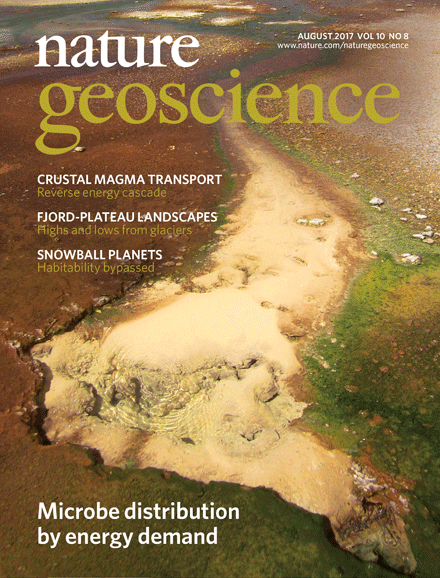
Cover of Nature Geosciences featuring the research of M. Amenabar et al. The image shows overlapping gradients in mineral substrates capable of supporting microbial metabolism in a hot spring outflow channel in Yellowstone National Park, WY. Source: Nature Geosciences (August 2017 Volume 10 No 8)Scientists from the University of Wisconsin-Madison (UW), Arizona State University (ASU), and Montana State University (MSU) have teamed up to discover a puzzle at the junction of geochemistry and biology: Why would a microorganism thriving in a hot spring draw its energy from low-quality sources instead of rich ones?
The paper “Microbial substrate preference dictated by energy demand rather than supply” is published in Nature Geoscience, and authored by Maximiliano Amenabar (MSU, also with the NASA Astrobiology Institute (NAI) team at University of Colorado, Boulder (CUB)), Everett L. Shock (ASU and NAI teams at MIT and CUB), Eric Roden (UW and NAI team at UW), John Peters (MSU), and Eric Boyd (MSU and NAI teams at CUB, UW, and the Virtual Planetary Institute).
The excerpted press release by Robert Burnham is available through the Arizona State University website.
Source: [Nature Geosciences]
November 07, 2017 • Posted by: Miki Huynh • Report issue
-
Microbes Dine (Very Slowly) on Coal and Shale, 2 Km Beneath the Seafloor
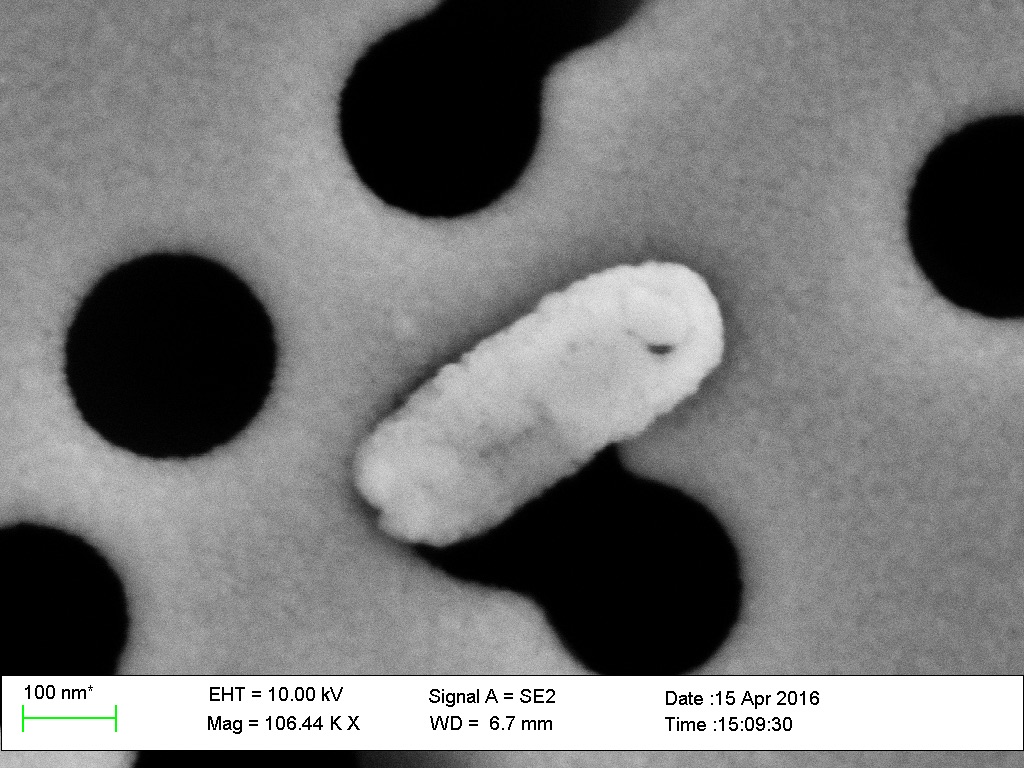
A microbe collected from an incubation of coal amended with methylamine. Source: Trembath-Reichert et al. (via DCO)Elizabeth Trembath-Reichert. a NASA Postdoctoral Porgram fellow at the Woods Hole Oceanographic Institution and a member of the NASA Astrobiology Institute team based at the University of Southern California, is lead author on a paper that measures the activity level and generation times of microbes living in coal and shale beds up to two kilometers below the seafloor. Despite low cell numbers and slow reproduction, the microbes actively consume carbon and nitrogen compounds from their environment.
The paper, “Methyl-compound use and slow growth characterize microbial life in 2-km-deep subseafloor coal and shale beds” is published in Proceedings of the National Academy of Sciences.
We excerpt a press release from Deep Carbon Observatory.
Source: [PNAS]
November 01, 2017 • Posted by: Miki Huynh • Report issue
-
Maggie Osburn Honored as 2017 Packard Fellow

Magdalena Osburn has been selected as a 2017 Packard Fellow. Image source: Osburn Isotope Geobiology LabGeobiologist Magdalena “Maggie” Osburn has received a 2017 David and Lucile Packard Fellowship Award for her work at the geochemistry-microbiology interface.
Source: [Packard Foundation]
October 25, 2017 • Posted by: Miki Huynh • Report issue
-
Ask an Astrobiologist featuring Dr. Carl Pilcher
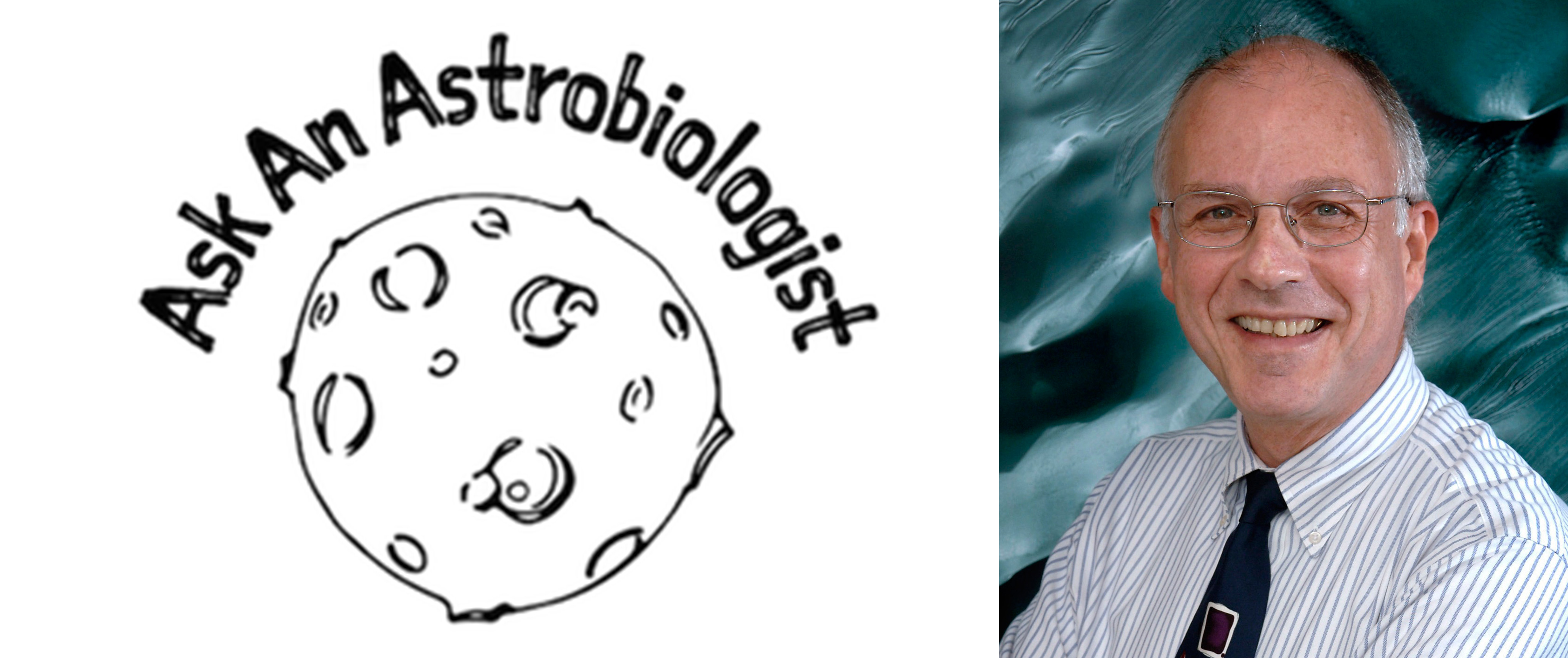
The Ask an Astrobiologist Show returns for its second season, beginning with an interview with Dr. Carl Pilcher, former director of the NASA Astrobiology Institute. The live Q&A has been rescheduled to Thursday, November 2 at 10AM PT.
Source: [SAGANet]
October 19, 2017 • Posted by: Miki Huynh • Report issue
-
Contemporary Water and Habitability of Mars

The next live STScI webcast, “Contemporary Water and Habitability of Mars,” presented by Lujendra Ojha of Johns Hopkins University airs November 3 at 12PM ET.
For more info on the STSci seminar series and to view the calendar of upcoming talks, visit: http://www.stsci.edu/institute/smo/ipl/lecture
Source: [Johns Hopkins University and The Space Telescope Science Institute]
October 17, 2017 • Posted by: Miki Huynh • Report issue
-
Early Earth, Warm or Cold?

Artist concept of the early Earth's surface.
The early Earth was a hellish place, pummeled by meteors and a choking atmosphere, and yet somehow life got a grip there.Source: [Earth and Planetary Science Letters]
October 17, 2017 • Written by: Aaron Gronstal • Report issue
-
Pale Rainbow Dots: The Search for Other Earths

Source: Carnegie Institute for ScienceWednesday, October 25, 2017, 6:30 PM ET What does it mean to be a habitable planet? How can we find life if it’s truly “alien” and different from life on Earth? And what techniques can we use to search for life on worlds orbiting distant stars? Drs. Arney and Domagal-Goldman, astrobiologists at NASA Goddard Space Flight Center, will discuss the science behind these questions and the future telescopes that may provide the answers. The lecture at the Carnegie Institution for Science will be streamed live. For details, visit the event page.
Source: [Carnegie Institute for Science]
October 16, 2017 • Posted by: Miki Huynh • Report issue



